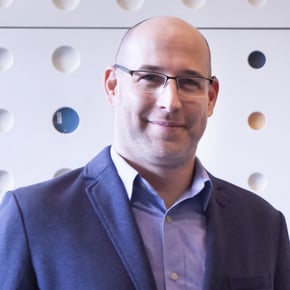Change is hard. Whether it’s on a personal or an organisational level, wherever there is change there will always be resistance.
One of the main causes of this is that people, who make up organisations, are wary of the unknown or unfamiliar. For many companies, digital transformation is seen as an enormous shift upsetting the current balance that they have. Over the years we’ve spoken to businesses wanting to reform their tax and finance processes but thinking this will result in major disruption to their business.
For the past few decades firms have been through large, laborious transformation projects bringing in ERP systems which have been sold to ‘do-it-all’. Often by the time these systems are fully implemented the company structure has changed so much, either the initial problems still exist or new issues have arisen.
The appetite for large overhauls is waning despite the opportunities in the current digital era and developments such as cloud computing and artificial intelligence (A.I). Accompanied by a high price tag and the potential risk of failure many companies are looking at alternatives to large scale implementations.
So, the question to ask is can you still create significant change in an organisation without taking radical steps? The answer is yes, the answer is kaizen.
What is kaizen and why should your business care?
The idea, or concept, of kaizen is to focus on continuous improvement through incremental changes that lead to significant gains over time. The word kaizen is the Sino-Japanese word for ‘improvement’ and can be translated to mean change (kai) for the good (zen). You may be thinking that this sounds like lean and you’re correct. Continual business improvement is one of the tenants in lean and kaizen is practiced within lean in various forms.
There are several benefits to the kaizen approach such as:
- Significantly reducing risk due to no large change
- Higher likelihood of buy-in by the CFO and CEO as there is no large upfront cost
- The concept of continual improvement means that processes and systems are constantly being made better
- Competitive advantage due to the innovative nature of the strategy
- Adoption of change is more palatable to employers due to less upheaval
There have been several companies that have successfully used the Japanese philosophy to great effect such as Toyota, Ford Motor Company and Nestle. All of these firms have implemented kaizen uniquely within their organisation such as full organisational adoption to mapping out the most efficient process for a new bottling plant. Regardless of how these businesses have embraced kaizen, they all have one thing in common – they strive for continual improvement.
We’re not saying that this approach will work in every situation, nor that it replaces the practice of change management, rather suggest it should be seen as a complementary approach.
What do for:sight and kaizen have in common?
Arkk’s cloud-based solution, for:sight, has been built to accommodate the kaizen philosophy. Operating in the cloud means that companies no longer need to worry about large upfront costs as for:sight is based on a subscription model. We don’t charge per user, we charge for what you actually use.
Digital transformation can be a term that strikes fear into the c-suite, not wanting to fall victim to the many mass organisational projects that fail. Arkk’s platform allows easy integration with businesses’ current IT systems and we’re able to map out your company’s tax processes within the platform. The entire platform is built to seamlessly integrate into current systems. More importantly you can implement just as much of your process at any point in time. This means you can bring in your financial process in small pieces and cause minimal disruption.
Kaizen and other similar strategies are all aimed at one thing, creating change. The type of change that gives firms a competitive advantage, allows them to innovate or improves their current products and services. Unlike other approaches, it’s based on small but continual improvements – nothing to rock the boat. Any company can implement a kaizen methodology in the pursuit of advancement, as personal and business development guru Brian Tracy stated: “Excellence is not a destination; it is a continuous journey that never ends.”
If you’d like to learn more about for:sight and how it can seamlessly integrate within your business, get in touch today.

